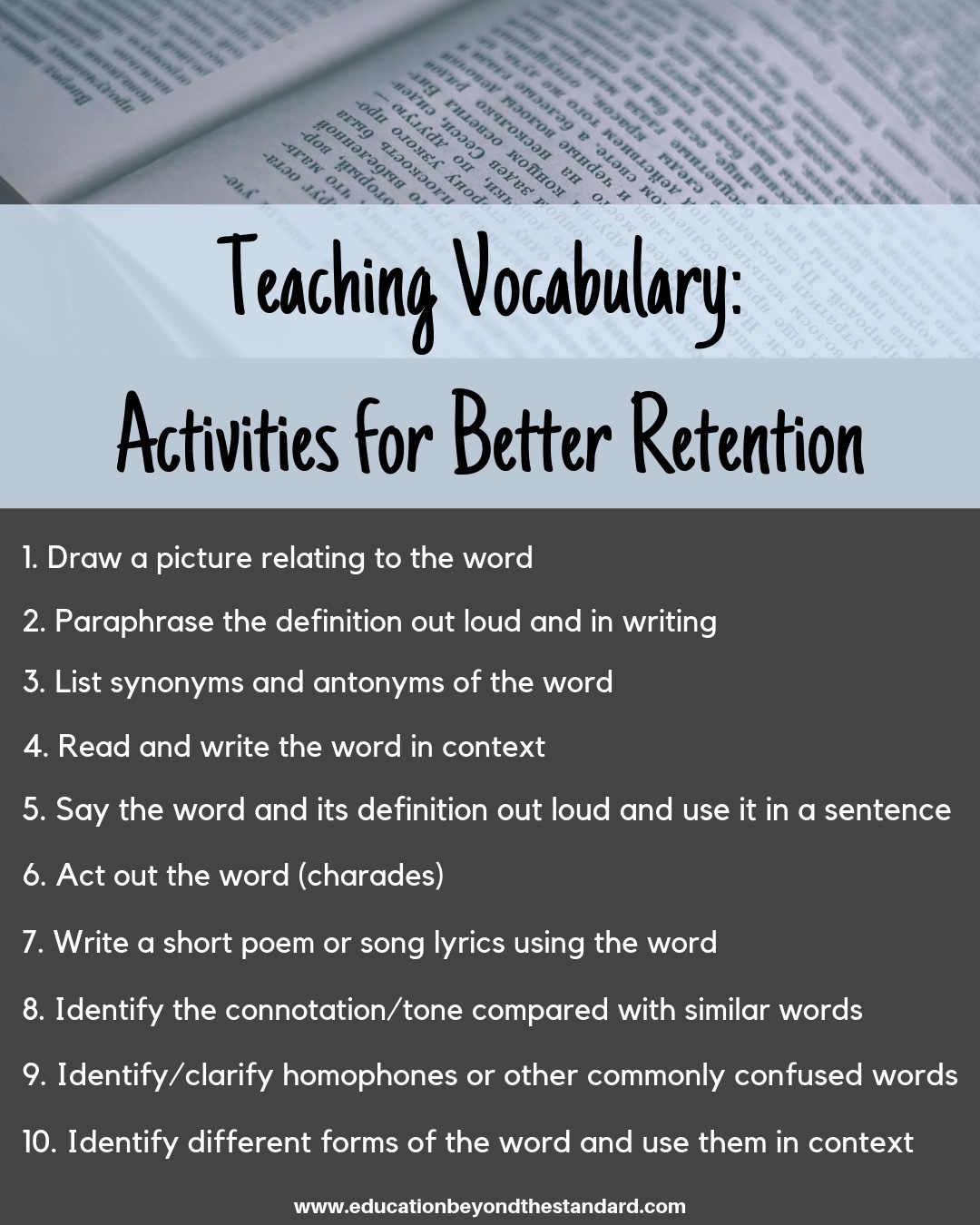Teaching Vocabulary With a Language Building Approach
/Why Teach Vocabulary
Teaching vocabulary makes our students better readers, writers, and test takers. I believe it may even make them better thinkers, as analytical skills are enriched with the nuanced thinking that comes with a greater working vocabulary. Despite the pervasive belief that vocabulary no longer matters on the SAT and ACT, students who have a strong vocabulary do much better on the English/Reading/Writing portions of these tests.
Students come to the classroom with widely different language backgrounds, even among native English speakers. Some students hear advanced vocabulary spoken in their homes and, as a result, are accustomed to communicating with a wide range of vocabulary. Some are avid readers who become skilled at understanding words in context. Other students may be reluctant readers who skip over unfamiliar words. Still others come from homes in which limited vocabulary is used by parents/guardians or a different language is spoken.
One important way to ensure that all of our students develop into effective readers, writers, and thinkers is by teaching vocabulary. Vocabulary instruction can easily be woven into English (or other) curriculum and can complement the teaching of writing, literary and nonfiction analysis, and other important academic skills. Research supports the idea that teaching vocabulary through a holistic language building approach is more effective than using the more traditional word-definition approach.
What Is a Language Building Approach?
Language building involves forming as many connections in the brain as possible so that new words are understood in concert with other words, ideas, and even visual representations. It places less emphasis on memorizing definitions (although of course knowing the meaning of a word is always fundamental), and more emphasis on things like:
Can I use the word correctly in context and identify when it is correctly used?
Do I understand how the word relates to its synonyms/antonyms? How the word’s connotation relate to connotations of synonyms?
Can I identify other forms of the word and use those correctly? (example: persuasive, persuasiveness, persuasively, unpersuasive, etc.)
Assessing Vocabulary
Assessing vocabulary knowledge in a meaningful way can be tricky; the fact that a student is able to memorize and regurgitate a definition doesn’t mean that he or she will remember the word 3 weeks from now or be able to use it correctly. Most students are able to memorize a list of definitions and retain that information for long enough to take a vocabulary quiz.
When we teach vocabulary effectively in the first place, using research based techniques to improve retention and build strong language connections, we can be more confident that our students will remember words and use them correctly long after we assess their knowledge. In addition, when our methods are focused on language building as opposed to word learning, students practice higher level thinking strategies that will improve their language skills more broadly, even after they leave our classrooms.
Research Backed Vocabulary Learning Practices
Research has shown that using a combination of learning approaches maximizes retention. The more links our brains form to a new word, the more likely it is for the word to stick with us long term. The following are language building techniques that are very effective when combined:
drawing a picture that reminds you of the word
actively repeating/writing and paraphrasing the definition
listing synonyms and antonyms of the word
reading and writing the word in context
saying the word several times out loud, saying its definition, and using it in a sentence
acting out the word (charades)
writing a short poem or song with the word
identifying the connotation, “shade,” or “tone” of the word in comparison to a similar word (for example, “calamitous” is stronger than “unfortunate”)
identifying and clarifying any homophones and other words that might be confused with the word in question
identify different forms of the word (precipitous, precipitously, precipitousness) and use those forms in context
The great thing about these techniques is that they can be used with any vocabulary, including literary terms, academic vocabulary, and domain-specific vocabulary. They can be used across subject areas as well.
Additional Resources
I’ve created a no-prep resource covering 200 words that come up frequently on the SAT and ACT that incorporates a number of these techniques.
I’ve also created a couple of easy, no-prep ways to bring vocabulary (and vocabulary + grammar) into a novel or nonfiction study.
Please let me know what you think in the comments below! What do you find effective when teaching vocabulary?



